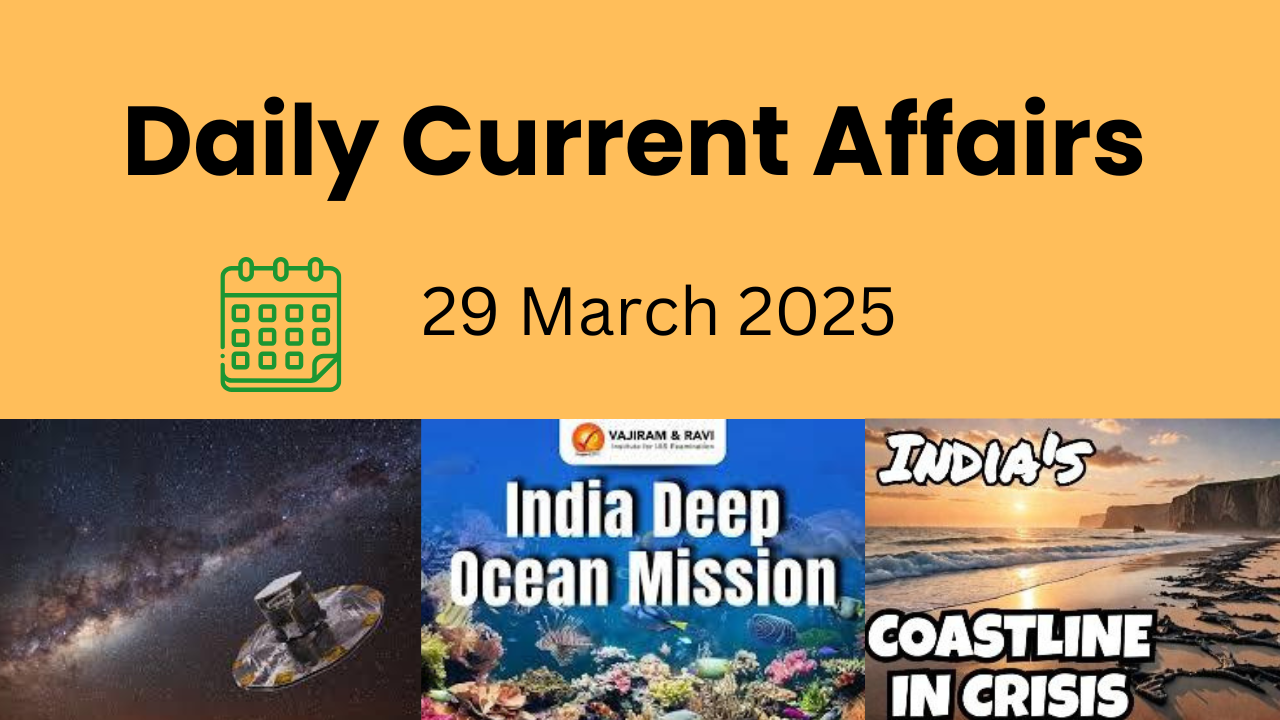1. Public Accounts Committee’s Recommendations for GST Regime: Simplifying India’s Tax System
Context: The Goods and Services Tax (GST), a landmark reform in India’s tax structure, was officially introduced on 1st July 2017 by Prime Minister Narendra Modi. It replaced numerous indirect taxes, such as VAT and excise duties, with a unified destination-based consumption tax. The aim of GST is to reduce the cascading effect of taxes, creating a unified national market that encourages economic growth and trade.
First proposed during Atal Bihari Vajpayee’s tenure, the concept of GST gained momentum with the introduction of the Constitution (122nd Amendment) Bill in December 2014. It was subsequently passed in 2015 and ratified in 2016 as the 101st Constitutional Amendment.
The Vision of GST: Key Objectives
- Simplification of India’s Tax System: GST integrates multiple Central and State taxes, aiming to reduce tax-related complexities.
- Economic Growth and Broader Tax Base: GST is designed to stimulate economic activity, enhance tax compliance, and increase the overall tax base.
- Unified National Market: One of its core goals is to create a seamless market by eliminating state-specific barriers, allowing businesses to operate with greater efficiency across India.
However, despite its promising goals, the GST regime has faced various challenges and criticism, particularly regarding its complex compliance requirements.
Public Accounts Committee’s Latest Recommendations for GST Reform
In its 19th Report, the Public Accounts Committee (PAC) has highlighted the need for significant reforms to make the GST regime more efficient and business-friendly. The PAC’s recommendations focus on easing compliance and addressing operational challenges that continue to trouble taxpayers.
1. Streamlining Compliance Procedures:
The PAC has urged the Finance Ministry to simplify the current GST framework. Key proposals include:
- Consolidation of Forms: Reducing the number of forms required for compliance to make the filing process more straightforward.
- Tiered Compliance System for MSMEs: Introducing a tiered approach to GST compliance, where smaller businesses face reduced filing frequency and simplified documentation requirements.
- Reducing Compliance Costs for Small Businesses: By simplifying processes, especially for MSMEs, the burden of compliance can be reduced significantly.
2. Addressing the Biometric-Based Aadhaar Authentication:
The Aadhaar authentication system has been a central part of the GST compliance process, but the PAC has raised concerns over its complexity. The biometric verification process has created issues for some taxpayers, especially in remote areas, potentially undermining the “One Nation, One Tax” vision of GST.
3. Reforming the GST Portal for Better User Experience:
The PAC has recommended that the GST portal be made more user-friendly. This includes:
- Clearer Guidance for Taxpayers: Providing better instructions during the filing process to avoid errors.
- Enhanced Portal Navigation: Streamlining the portal to ensure taxpayers can navigate it easily, reducing errors and frustration.
4. Simplification of Criminal Penalties:
The PAC has stressed the need to reconsider the harsh criminal penalties for unintentional errors in GST compliance. While the intention is to encourage tax compliance, the committee suggests that honest taxpayers should not face severe penalties for minor mistakes.
5. Leveraging Data Analytics and AI for Accurate Revenue Projections:
The PAC recommended adopting data analytics and AI tools to more accurately project GST revenue. This can help address the decline in the share of indirect taxes in total tax revenue and improve financial forecasting.
6. Efficient Refund System:
One of the most pressing issues facing the GST regime is the inefficient refund process. The PAC has called for:
- Clear Timelines for Refund Processing: Establishing fixed timelines for refund disbursement to ensure liquidity for businesses.
- Grievance Redressal Mechanism: A dedicated system for resolving refund-related issues promptly.
7. Automation for MSME Compliance:
To further ease the burden on Micro, Small, and Medium Enterprises (MSMEs), the PAC has recommended the automation of the return filing and refund processing systems. This would reduce manual intervention and ensure smoother compliance with reduced frequency.
Additional Insights: The Future of GST
While the PAC’s recommendations aim to streamline the current system, the journey toward a fully functional GST regime is ongoing. Despite initial hurdles, GST has contributed significantly to the Indian economy:
- Increased Tax Collection: The move to a unified tax system has led to improved tax compliance and higher revenue collection.
- Boost to Inter-State Trade: By removing inter-state barriers, GST has facilitated smoother trade between states, benefiting supply chains.
- Technological Integration: The use of technology, such as AI and machine learning, will play a pivotal role in optimizing compliance processes and improving the accuracy of tax collection and revenue projection.
However, as businesses continue to face challenges related to GST compliance, the PAC’s recommendations offer a potential pathway for improvement—one that can create a more business-friendly environment, reduce friction, and promote greater economic efficiency.
Conclusion:
The PAC’s proposals, if implemented effectively, could transform the GST framework into a more streamlined, efficient, and user-friendly system. As India continues to evolve its tax policies, these reforms will play a crucial role in shaping the future of the country’s taxation system, making it more conducive to economic growth and business development.
2. India’s Push into the Deep Sea: A Strategic and Economic Imperative
Context: India is making significant strides toward exploring the vast, untapped resources of the deep ocean. With projects like Matsya-6000, India aims to enhance its technological prowess and secure economic and strategic advantages in the underwater domain.
Deep Sea Technology Latest News:
Recently, India completed wet testing of its Matsya-6000 submersible, a remarkable achievement under the Samudrayaan Project. Developed by the National Institute of Ocean Technology (NIOT), this deep-sea submersible can dive up to 6 km below the surface, aiming to explore underwater mineral resources off the Indian coast. This project is a crucial part of India’s Deep Ocean Mission, aiming to place India among the select nations with human-rated submersibles operating at such extreme depths.
Background:
India’s push into the deep sea is not just about scientific exploration—it’s a multidimensional effort involving economic strength, digital infrastructure, national security, and global competition. According to Vice Admiral Biswajit Dasgupta (Retd), developing deep-sea capabilities is essential for strategic parity with other nations, especially China, which has made considerable progress in this field.
The foundation of India’s current efforts can be traced to the Deep Ocean Mission, launched in 2018, aimed at exploring the ocean’s vast resources and building a robust technological framework to access them.
Importance of Deep Sea Matters for India:
The deep sea holds enormous potential for India’s economic growth, technological development, and national security. Some key aspects include:
1. Mineral and Energy Resources:
- The seabed within India’s Exclusive Economic Zone (EEZ)—which spans 200 nautical miles (about 370 km) from the coastline—holds valuable resources like polymetallic nodules, gas hydrates, oil, and other rare-earth elements.
- These resources are critical for India’s growing industrial and energy needs, particularly in sectors like electronics manufacturing, renewable energy, and defense.
2. Food and Nutraceuticals:
- Deep-sea fisheries and marine bio-resources offer substantial economic and nutritional benefits.
- Developing efficient harvesting methods could bolster India’s food security.
3. Oceanographic and Climate Data:
- Deep ocean exploration contributes to climate modelling, weather forecasting, and environmental research.
- Such data is crucial for predicting and mitigating climate change impacts.
4. Digital Economy Infrastructure:
- Over 95% of global internet traffic is transmitted through undersea fiber-optic cables.
- Ensuring the security, maintenance, and expansion of these cables, especially with Indian participation, is crucial for the nation’s digital economy.
5. National Security:
- The deep sea is becoming a space of strategic competition.
- China has already unveiled a cable-cutting device capable of damaging undersea infrastructure, highlighting the need for India to enhance its domain awareness, monitoring systems, and countermeasures.
Challenges of Deep Sea Technology:
While the potential benefits are immense, developing deep-sea capabilities poses several challenges:
- Communication Underwater:
- Communication in deep water is hindered by factors like temperature, pressure, and salinity.
- Developing Very Low Frequency (VLF) and Extremely Low Frequency (ELF) sound systems is essential but costly.
- Pressure Resistance:
- At depths of 6 km, pressure exceeds 380 atmospheres—equivalent to the weight of several hundred elephants pressing down on a single square meter.
- Designing pressure-resistant materials and submersibles is a highly complex engineering challenge.
- Cost and Expertise:
- Building deep-sea technologies demands massive financial investments, specialized research, and a skilled workforce.
- Countries like China, the US, Japan, and France have already made substantial progress.
- Safety Concerns: The OceanGate Titan submersible tragedy in 2023 highlighted the risks of insufficient safety measures in deep-sea exploration.
What India Needs to Do Next:
India’s Deep Ocean Mission is a promising start, but more needs to be done to achieve comprehensive deep-sea capabilities. Key recommendations include:
- Create a Dedicated Ministry: Upgrade the Department of Ocean Development to a full-fledged Ministry of Ocean Affairs, with a Cabinet-rank Minister to drive coordination and accountability.
- Boost Funding and Speed: Approve projects in mission-mode with clear deadlines, adequate budgets, and transparent review mechanisms.
- Establish Centers of Excellence:
- Invest in academic institutions and research labs focused on deep ocean science and technology.
- Encourage innovation and skill development to build a world-class workforce.
- Support Industrial Partnerships: Incentivize private companies to participate in deep-sea mining, cable-laying, salvage operations, and submersible development.
- Create a 10-Year Roadmap:
- Formulate a comprehensive plan with defined milestones across technology, governance, infrastructure, and security.
- Ensure regular monitoring and evaluation to stay on track.
Conclusion: India’s ambition to emerge as a global economic and strategic power cannot ignore the depths of the ocean. From minerals and food resources to digital infrastructure and security, the deep sea holds the key to the future. With Matsya-6000 as a starting point, India must accelerate efforts to build a robust, well-funded, and forward-looking deep ocean capability. Achieving this will not only boost India’s scientific and economic stature but also ensure strategic parity with global powers.
3. Supreme Court Ruling: Legal Difference Between Preparing for Rape and Attempting It
Context: The Supreme Court has intervened in a controversial Allahabad High Court ruling that downgraded charges against three accused from attempted rape to mere preparation. The case has sparked renewed discussions about the legal distinction between “preparation” and “attempt” in criminal law.
Legal Difference between Preparation and Attempt: Latest News
The Supreme Court has stayed an Allahabad High Court ruling that reduced charges against three accused from attempted rape to mere preparation, calling the judgment insensitive and legally flawed.
The High Court had removed attempted rape charges and instead directed trial under lesser offences, including:
- IPC Section 354B: Using criminal force against a woman with intent to disrobe.
- Sections 9/10 of POCSO Act, 2012: Aggravated sexual assault.
The case highlights the critical legal distinction between:
- Preparation (generally not punishable)
- Attempt (criminally punishable)
Background of the Case:
The case originated from an appeal against a POCSO court order that had summoned the accused for trial under:
- Section 376 IPC (rape)
- Section 18 of the POCSO Act (punishment for attempt)
On March 17, 2025, the Allahabad High Court downgraded the charges, terming the act as mere “preparation.”
Distinction Between ‘Preparation’ and ‘Attempt’:
Key Legal Distinction:
- Preparation: Planning or arranging the means to commit an offence.
- Attempt: The stage where the accused takes concrete steps towards committing the crime.
Legal Criteria for ‘Attempt’ (Abhayanand Mishra v. State of Bihar, 1961)
To establish an attempt, the prosecution must prove:
- Intention to commit the offence.
- Preparation to commit the offence.
- Concrete steps taken towards committing the offence.
- Proximity requirement: The act must be close enough to the intended crime to be considered an attempt.
Where Attempt Begins (State of Maharashtra v. Mohd. Yakub, 1980):
- “Attempt begins where preparation ends.”
- Without an overt act leading to the crime, the accused cannot be punished for mere preparation.
Allahabad HC Downgrades Attempted Rape Charges:
The Allahabad High Court ruled that the prosecution failed to prove the offence had progressed beyond mere preparation.
HC’s Reasoning:
- The court relied on the 1836 English case Rex v. James Lloyd, which required proof of the accused’s intent to gratify their passions despite resistance.
- It noted no claim of penetrative assault, a key requirement for proving rape under the IPC.
- Therefore, the HC reduced the charges to IPC Section 354B (assault with intent to disrobe a woman).
Reduced Charges and Punishment:
- Section 354B IPC: Punishment of 1 to 5 years in prison.
- This is significantly lesser than the punishment under Section 376 IPC or Section 18 of the POCSO Act.
Historical Precedents in Attempted Rape Cases:
The Lloyd ruling (1836) continues to influence Indian courts in deciding whether an accused has attempted to commit rape.
Recent Applications of the Lloyd Ruling:
- May 2024: The Rajasthan High Court applied the Lloyd test to reduce an attempted rape conviction to Section 354 IPC (outraging a woman’s modesty).
- 2004 (Aman Kumar & Anr v. State of Haryana): The Supreme Court lowered an attempted rape conviction to a lesser offence using similar logic.
SC’s Criticism and Potential Legal Reassessment:
On March 25, 2025, the Supreme Court took suo motu cognizance of the Allahabad HC’s ruling, issuing a stay order and condemning the HC’s reasoning as “insensitive and legally flawed.”
SC’s Remarks:
- The SC criticized the HC for failing to appreciate the gravity of the offence.
- It noted that the observations were not only legally incorrect but also lacking in sensitivity toward the victim.
Possible Legal Reassessment:
The Supreme Court’s intervention presents an opportunity to:
- Redefine the legal standard for attempted rape.
- Provide clear guidelines for distinguishing between preparation and attempt.
4. Gaia Mission: Mapping the Milky Way with Unprecedented Precision
Context: The Gaia Mission, launched by the European Space Agency (ESA) in 2013, has concluded its primary operations with groundbreaking contributions to astronomy.
Gaia Mission Latest News:
On March 27, 2025, the ESA confirmed that the Gaia space observatory was “passivated” (drained of energy) and placed into a safe “retirement orbit” around the Sun.
About the Gaia Mission:
- Full Name: Originally named Global Astrometric Interferometer for Astrophysics (GAIA), later simplified to Gaia.
- Launch Date: 2013 by the European Space Agency (ESA).
- Objective: To create the most precise 3D map of the Milky Way using astrometry (measuring positions and movements of celestial bodies).
- Position: Placed at Lagrange Point 2 (L2), approximately 1.5 million km from Earth (behind Earth when viewed from the Sun), ensuring an unobstructed cosmic view.
Scientific Instruments:
1. Twin Telescopes:
- Captured light from different directions to enhance precision.
2. Digital Camera:
- Nearly 1 billion pixels, the largest ever flown in space.
3. Three Key Instruments:
- Astrometer: Measures precise locations of celestial bodies.
- Photometer: Determines the brightness and temperature of stars.
- Spectrometer: Identifies chemical composition and motion of objects.
Key Discoveries of Gaia:
1. Mapping the Milky Way in 3D:
Gaia provided the first precise 3D map of the Milky Way, revealing its complex structure:
- The central bar and spiral arms.
- A warped, wobbly disc, likely caused by past collisions with smaller galaxies.
- Ripples in the galaxy from these collisions may have contributed to the formation of new stars, including the Sun.
2. Discovery of New Black Holes:
- Discovered a new class of black holes that are invisible, detectable only by their gravitational effects.
- Identified one of the closest black holes to Earth.
3. Tracking Asteroids and Space Threats:
- Identified over 150,000 asteroids, mapping their orbits and potential threats to Earth.
The Gaia Mission has redefined our understanding of the Milky Way, offering insights into the galaxy’s structure, stellar evolution, and cosmic hazards.
5. Debrigarh Wildlife Sanctuary: A Hidden Gem of Odisha
Context: Debrigarh Wildlife Sanctuary, situated in the Bargarh district of Odisha near the Hirakud Dam (Mahanadi River), is a vibrant ecosystem known for its rich biodiversity and historical significance. It was declared a wildlife sanctuary in 1985 and has since become a vital habitat for various flora and fauna.
Historical Significance:
The sanctuary holds a special place in India’s freedom struggle. Veer Surendra Sai, a noted freedom fighter, established his base at Barapathara, located within the sanctuary, during his rebellion against the British.
Ecological Features:
Vegetation
The sanctuary predominantly comprises dry deciduous mixed forests, with key tree species including:
- Sal
- Asana
- Bija
- Aanla
- Dhaura
Flora and Fauna:
The sanctuary harbors a wide range of wildlife, including:
- Carnivores: Tiger, Leopard, Hyena
- Herbivores: Spotted Deer, Antelopes, Sambar, Gaur, Nilgai, Bison
- Others: Sloth Bear, Langur Monkeys
Debrigarh Wildlife Sanctuary’s Unique Initiative: Indian Bison Fest
In a first-of-its-kind initiative, the sanctuary recently hosted the ‘Indian Bison Fest’ aimed at promoting awareness about the conservation of the Indian Bison (Gaur) and highlighting its ecological significance.
The Majestic Indian Bison (Gaur):
Overview:
The Indian Bison (Gaur) is one of the largest extant bovines and among the most impressive wild cattle species in the world, with a shoulder height reaching up to 220 cm.
Habitat:
- Found in forested hills and grassy areas of South and Southeast Asia.
- Western Ghats in Southern India is one of the most extensive strongholds, particularly in the Wayanad – Nagarhole – Mudumalai – Bandipur complex.
Distribution:
- Global Population: Approximately 13,000 to 30,000 individuals.
- India hosts nearly 85% of the population, with smaller populations in Burma and Thailand.
Conservation Status:
- IUCN Red List: Vulnerable
- CITES: Appendix I (Prohibits international trade)
- The Wildlife Protection Act, 1972: Schedule I (Highest protection under Indian law)
State Recognition:
The Gaur is recognized as the State Animal of Goa and Bihar.
Additional Facts & Knowledge:
- The Gaur is known for its immense strength and muscular build. Adult males can weigh up to 1,500 kg.
- Unlike other wild cattle, Gaurs are primarily diurnal, but they may become nocturnal in areas with frequent human disturbance.
- Conservation efforts include habitat protection, anti-poaching measures, and awareness programs like the Indian Bison Fest.
- They have a complex social structure, usually found in small herds led by a dominant female.
Debrigarh Wildlife Sanctuary is not only a treasure trove of biodiversity but also a symbol of India’s natural heritage and historical legacy. Conservation initiatives like the Indian Bison Fest play a crucial role in safeguarding these remarkable creatures and their habitat for future generations.
6. The Indian Coastal Crisis
Context: India’s coastal regions are grappling with a dual crisis:
- Illegal Light Fishing: Depleting marine life and affecting traditional livelihoods.
- Coastal Erosion: Threatening 33.6% of the coastline, as highlighted by recent government data.
About India’s Coastal Region:
Extensive Coastline:
- India boasts a 7,500 km coastline, stretching across 9 states and 4 Union Territories (UTs).
- Supports livelihoods, trade, and biodiversity.
Economic Hub:
- Contributes approximately 4% to India’s GDP through fisheries, tourism, and shipping.
- Ports like Mumbai and Chennai handle nearly 70% of India’s trade.
Biodiversity Hotspots:
- Mangroves: E.g., Sundarbans, the largest tidal halophytic mangrove forest in the world.
- Coral Reefs: E.g., Gulf of Kutch, housing some of India’s most diverse marine life.
- Endangered Species: E.g., Olive Ridley turtles nesting along the Odisha coast.
Population Pressure:
- Over 250 million people live within 50 km of the coast, increasing vulnerability to natural disasters.
Climate Vulnerability:
- Rising Sea Levels: 3.2 mm/year, contributing to erosion and habitat loss.
- Frequent Cyclones: Increasingly impacting coastal settlements.
Significance of Coastal Ecosystems:
1. Carbon Sequestration:
- Mangroves absorb and store 4x more carbon than terrestrial forests, playing a crucial role in climate change mitigation.
- Example: Bhitarkanika mangroves (Odisha) serve as a major carbon sink.
2. Fisheries Support:
- Coastal waters contribute 70% of India’s fish production, crucial for livelihoods.
- Example: 16 million fishers rely on coastal fishing for income.
3. Natural Barriers:
- Coral Reefs and Sand Dunes: Act as buffers against coastal erosion and storm surges.
- Example: Gulf of Mannar’s reefs shield Tamil Nadu’s shoreline from erosion.
4. Tourism Revenue:
- Coastal tourism generates approximately $11 billion annually, boosting local economies.
- Examples: Goa and Puri beaches attract millions of tourists each year.
5. Cultural Heritage:
- Coastal areas house UNESCO World Heritage Sites and age-old traditions.
- Examples: Chola temples (Tamil Nadu) and Koli fishing communities (Maharashtra).
Issues Plaguing Indian Coastal Systems:
1. Illegal Light Fishing:
- Despite bans, mechanized boats use bright LED lights to attract fish, particularly harming juvenile populations.
- Examples: Maharashtra and Andhra Pradesh are worst-hit, impacting traditional fishers.
2. Coastal Erosion:
- Rising sea levels and activities like sand mining contribute to erosion.
- Example: Dakshina Kannada (Karnataka) lost 48.4% of its coast in 30 years.
3. Pollution:
- Plastic waste and industrial effluents are choking marine life and degrading water quality.
- Example: Versova Beach (Mumbai) required massive cleanups to restore its ecosystem.
4. Habitat Destruction:
- Mangroves and wetlands are cleared for infrastructure projects, compromising natural storm defenses.
- Example: Mumbai lost 40% of its mangroves since 1987 due to urban expansion.
5. Weak Enforcement:
- Lack of stringent monitoring encourages illegal construction and fishing.
- Example: Adani Port (Kerala) faced Coastal Regulation Zone (CRZ) violations due to poor oversight.
Way Forward:
1. Strict Enforcement:
- AI Drones and increased Coast Guard patrols to detect illegal activities.
- Example: Kerala’s crackdown on LED-equipped boats significantly reduced illegal light fishing.
2. Eco-Friendly Infrastructure:
- Artificial reefs and sand replenishment methods to curb erosion.
- Example: Puducherry’s submerged breakwaters reduced erosion by 30%.
3. Community Participation:
- Engaging local fishers in conservation initiatives ensures sustainable fishing practices.
- Example: Tamil Nadu’s fisher unions actively patrol against illegal trawling.
4. Climate Adaptation:
- Relocating high-risk coastal settlements to safer areas.
- Example: Odisha’s cyclone-resistant homes for vulnerable communities.
5. Research & Funding:
- Expanding studies on erosion and allocating budgets for mangrove restoration.
- Example: NCCR’s satellite mapping helps track erosion hotspots accurately.
Conclusion: India’s coasts are integral to its ecology, economy, and cultural heritage, yet they face growing threats from erosion, pollution, and overfishing. A balanced approach involving stricter enforcement, community involvement, and sustainable policies is essential to protect these ecosystems for future generations.




